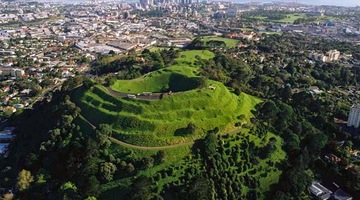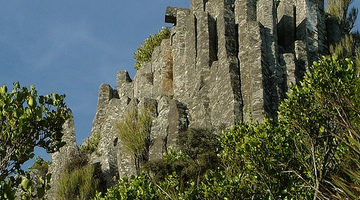Professor Richard Price introduces some of the common types of volcanic rocks and talks about how they are used to study volcanoes.
Transcript
PROF RICHARD PRICE
The two most common rock types on the Earth are andesite and basalt, but at the other end of things are the rhyolites.
So this is a rhyolite from the North Island. You notice immediately it’s white, it’s light coloured. It’s light coloured because it’s got a lot of silicon in it. It has low magnesium and low iron, and magnesium and iron make rocks look dark, silica makes them look light.
In contrast, here’s a basalt, which is much lower in silica and much higher in iron and magnesium, so it looks much darker. So an andesite has got a composition which is somewhere between the two in terms of its silica and magnesium. So they are the two rock types that dominate the North Island – basalt and andesite at one end and rhyolite at the other.
The more silicon and the less magnesium and iron that you have in a magma, the more viscous it is and the lower the temperature. So you can produce rhyolite magmas at relatively low temperatures compared to basalt. The difference is then between these and these is the basalt magmas are much less viscous, they are much higher temperature, they are much more fluid – so the classic sort of lava flows you see in Hawaii where magma is flowing along, it looks like it’s flowing like water.
In the case of the rhyolite type magmas, they are really quiet viscous, and so they erupt explosively. And the main reason for that is that the volatiles – the water that is dissolved in the magma – can’t get out so readily and so pressure builds up and eventually you get an explosive eruption. And in fact, for the last 2 million years, mostly TaupÅ Volcanic Zone has produced rhyolite, large volumes of rhyolite, and big explosive eruptions.
Acknowledgements:
ISTOCK PHOTO
USGS/Cascades Volcano Observatory




